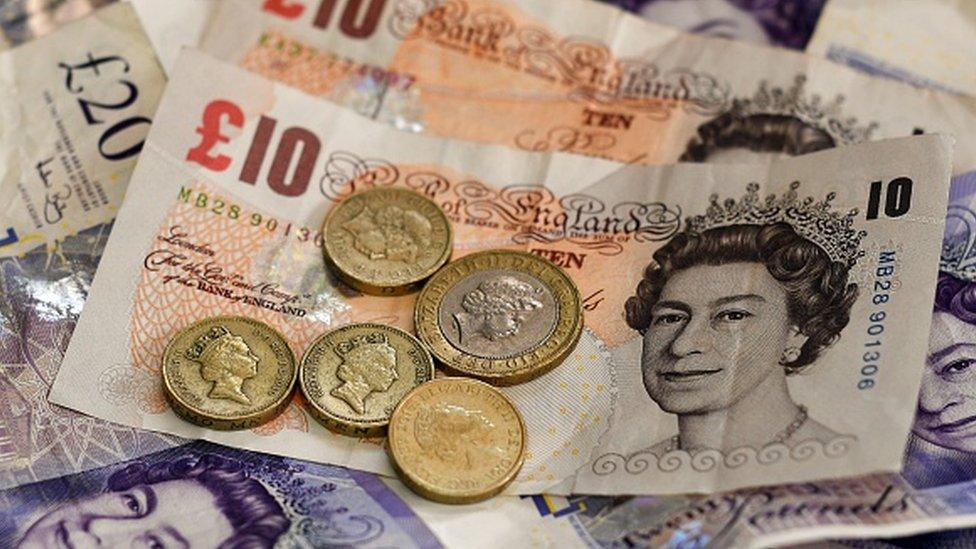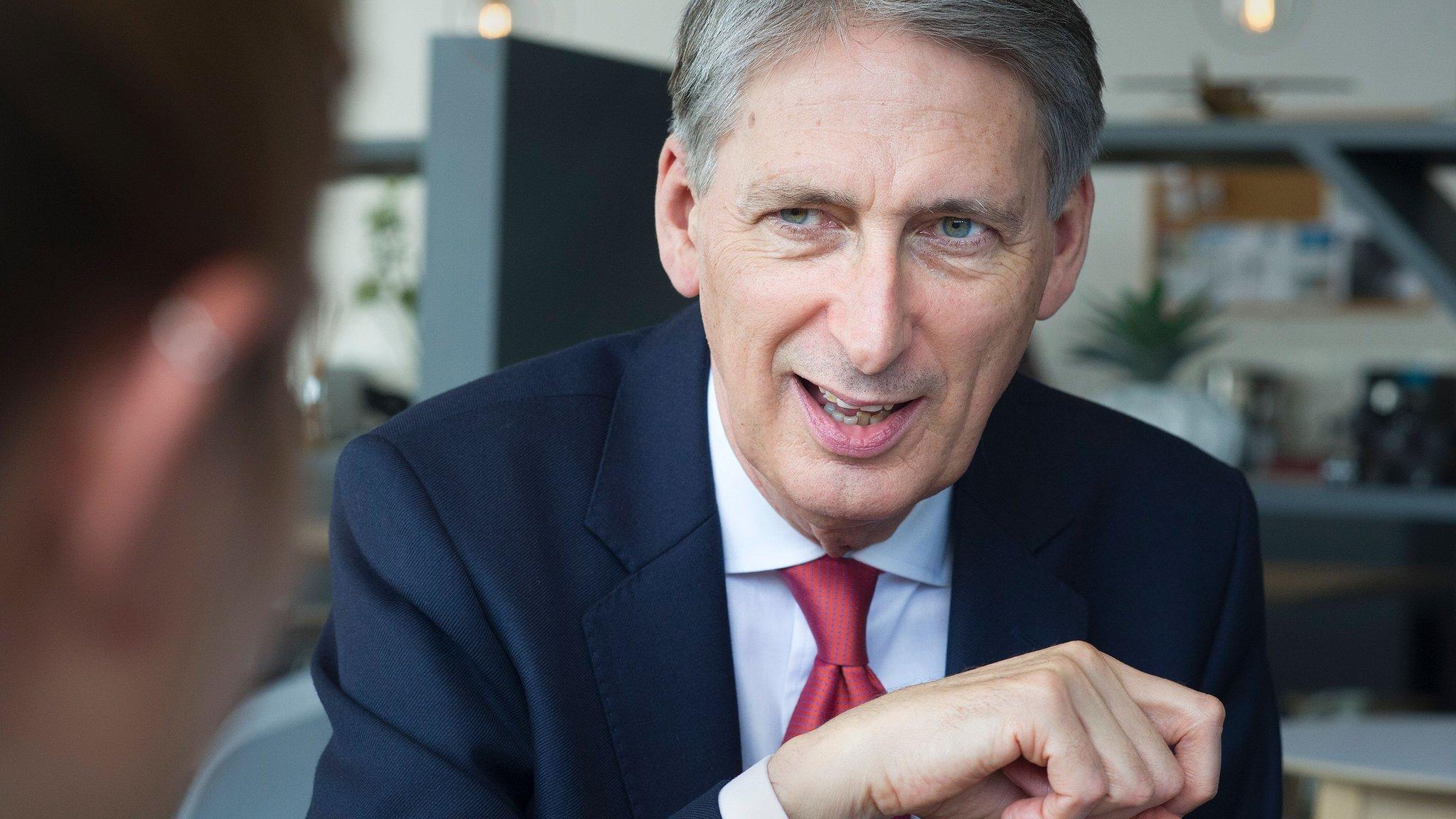Government borrowing falls in December
- Published

Government borrowing fell by £0.4bn in December to £6.9bn, compared with 2015.
The figures, from the Office for National Statistics, means borrowing for the year is £63.8bn, £10.6bn lower than for the same period a year ago.
The last Autumn Statement indicated that the government would borrow £68bn over the full financial year to the end of April.
The government typically receives more money than it spends in January, when a high number of tax bills are paid.
The ONS revised the borrowing figure for November down from £12.6bn to £11.3bn, which will help the Chancellor, Phillip Hammond, to keep to the Autumn Statement target.
However, even if he meets it, the total will still represent about 3.5% of economic output.
Budget balancing
A spokesman for the Treasury said the government had made "significant progress in repairing the public finances" by pushing down the deficit from 10% of GDP six years ago to 4%.
Later on Tuesday, Mr Hammond will present an updated Charter for Budget Responsibility, setting out his new fiscal rules to bring the public finances back to balance.
The government has abandoned the previous chancellor's aim of balancing the budget by 2020.
"The continued, albeit modest, monthly declines in public sector borrowing are encouraging and mean that the government remains on course to meet the [Office for Budget Responsibility]'s forecast for 2016-17, as set out in the Autumn Statement," said Suren Thiru, head of economics at the British Chambers of Commerce.
"The UK's fiscal position, which was weakened significantly by the financial crisis, is likely to come under increasing pressure in the near term if UK economic growth weakens as expected.
"A slowing economy would further restrict the UK's capacity to collect enough tax revenue to consistently achieve deficit reduction in the coming years."
- Published17 January 2017
